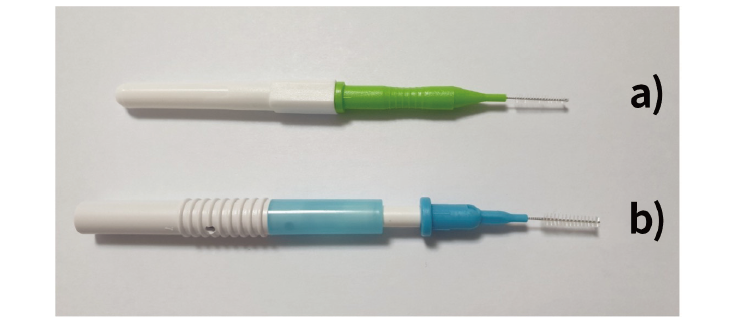Abstract
Objectives: Interdental toothbrushes are made and sold in various design types and brush thicknesses. However, there is little research on which type of interdental toothbrush currently manufactured and sold on the market is the most effective in eliminating interdental plaque. Therefore, this study aims at comparing the elimination rate of artificial dental plaque between reciprocating- and rotating-types of interdental toothbrush based on the frequency of application and thickness of brush. Methods: This study focused on the effective management of dental plaque using interdental toothbrush, a recommended item for personal dental hygiene. The method was as follows: artificial dental plaque coloring was applied to the distal surface of artificial tooth #46 and the mesial surface of #47. The area was subject to reciprocal movement three and six times to eliminate artificial plaque. Results: The results showed that using a 0.7 mm rotating interdental toothbrush, on the proximal surface of each molar, the elimination rates were: on the distal surface of #46, upon three applications 40.24%, upon six applications 30.41%; on the mesial surface of #47, upon three applications 44.52%, upon six applications 29.72%. Conclusions: These results showed that for rotating-type interdental toothbrushes, a high dental plaque elimination rate was observed even though many reciprocal movements were not performed.
Figures & Tables

Fig. 1.Interdental toothbrush type (a. Reciprocating-type interdental toothbrush, b. Rotating-type interdental toothbrush)


